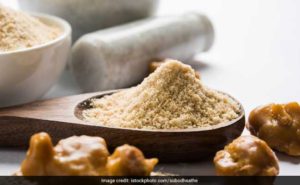Asafoetida, or heeng, is a common ingredient in most Indian kitchens –– so much so that the country imports Rs 600 crore worth of this pungent flavoured herb every year.
Now, scientists at CSIR-Institute of Himalayan Bioresource, Palampur (IHBT), are on a mission to grow heeng in the Indian Himalayas. The first sapling has been planted in Himachal Pradesh’s Kwaring village in Lahaul valley last week.

What is asafoetida and where is it commonly cultivated?
Ferula asafoetida is a herbaceous plant of the umbelliferae family. It is a perennial plant whose oleo gum resin is extracted from its thick roots and rhizome. The plant stores most of its nutrients inside its deep fleshy roots.
Asafoetida is endemic to Iran and Afghanistan, the main global suppliers. It thrives in dry and cold desert conditions. While it is very popular in India, some European countries too use it for its medicinal properties.
How is India entering into heeng cultivation?
Heeng is not cultivated in India. Government data states that India imports about 1,200 tonnes of raw heeng worth Rs 600 crore from Iran, Afghanistan and Uzbekistan.
Between 1963 and 1989, India once attempted to procure asafoetida seeds, the ICAR – National Bureau of Plant Genetic Resources (NBPGR), New Delhi stated. However, there are no published results of the same.
In 2017, IHBT approached NBPGR with an experimental project idea to cultivate heeng in the Indian Himalayas.
For research, heeng seeds were imported from Iran and they remained in the custody of NBPGR. There, the seeds were subjected to a number of tests while being kept under quarantine, to rule out fungal or infectious diseases, possibility of pest attacks and other adverse effects to an area if these seeds were cultivated in fields. This process can take up to two months.
After acquiring all regulatory approvals from Indian Council of Agriculture Research (ICAR), six accessions of heeng (EC966538 with Import Permit-318/2018 and EC968466-70 with Import Permit-409/2018) were introduced by IHBT, who have been carrying out further R&D since 2018. At this Palampur institute, the seeds were studied, and then put to test to see if they would germinate under a controlled laboratory set-up.
The challenge for the scientists here was that heeng seeds remain under a prolonged dormant phase and the rate of seed germination is just one per cent.
“Each of the six accessions imported showcased varying degrees of germination,” said Ashok Kumar, senior scientist at IHBT and Principle Investigator of this project.
To tackle this dormancy, which according to scientists is part of the plant’s adaptation technique to survive in desert conditions, they subjected the seeds to some special chemical treatments.
“After about 20 days, the seeds –– all six accessions gathered from various regions of Iran –– germinated under controlled laboratory conditions,” Kumar said.
In June this year, the CSIR institute inked an MoU with the agriculture ministry of Himachal Pradesh. Jointly, the project will be spearheaded over the next five years in the state.
The first asafoetida sapling, grown at IHBT’s Centre for High Altitude Biology, was planted by IHBT director Sanjay Kumar in Kwaring village of Lahaul valley on October 15.
“We believe the geo-climatic conditions required for cultivation of certain heeng varieties are available in India. On a pilot basis, we have started cultivation in Lahual-Spiti valley last week,” said Shekhar Mande, Director General, CSIR.
The agriculture ministry has identified four locations in the valley and has distributed heeng seeds to seven farmers in the region.
Asafoetida best grows in dry and cold conditions.
“The plant can withstand a maximum temperature between 35 and 40 degree, whereas during winters, it can survive in temperatures up to minus 4 degree. During extreme weather, the plant can get dormant,” said Kumar.
Regions with sandy soil, very little moisture and annual rainfall of not more than 200mm are considered conducive for heeng cultivation in India. Some initial experiments were conducted in high altitude districts of Mandi, Kinnaur, Kullu, Manali and Palampur in Himachal Pradesh. Besides, the researchers plan to expand their experiments to Ladakh and Uttarakhand. The institute will provide cultivation knowledge and skilling to local farmers. Seed productions centres are also in the offing.
What are some of the benefits of asafoetida?
Published studies list out a range of medicinal properties of heeng, including relief for digestive, spasmodic and stomach disorders, asthma and bronchitis. The herb is commonly used to help with painful or excessive bleeding during menstruation and pre-mature labour. Being an anti-flatulent, the herb is fed to new mothers.
How promising is cultivation in India?
It is very early to comment on the output of asafoetida cultivation as yet. Experts say the plant takes about five years to produce the extractable olego gum resin.
With the first sapling sown this October, scientists will have to monitor the plants over the next five years in realistic soil, weather and other conditions. By the end of this year, the target is to cover one hectare with heeng cultivation and take it to 300 hectares during the next five years.

